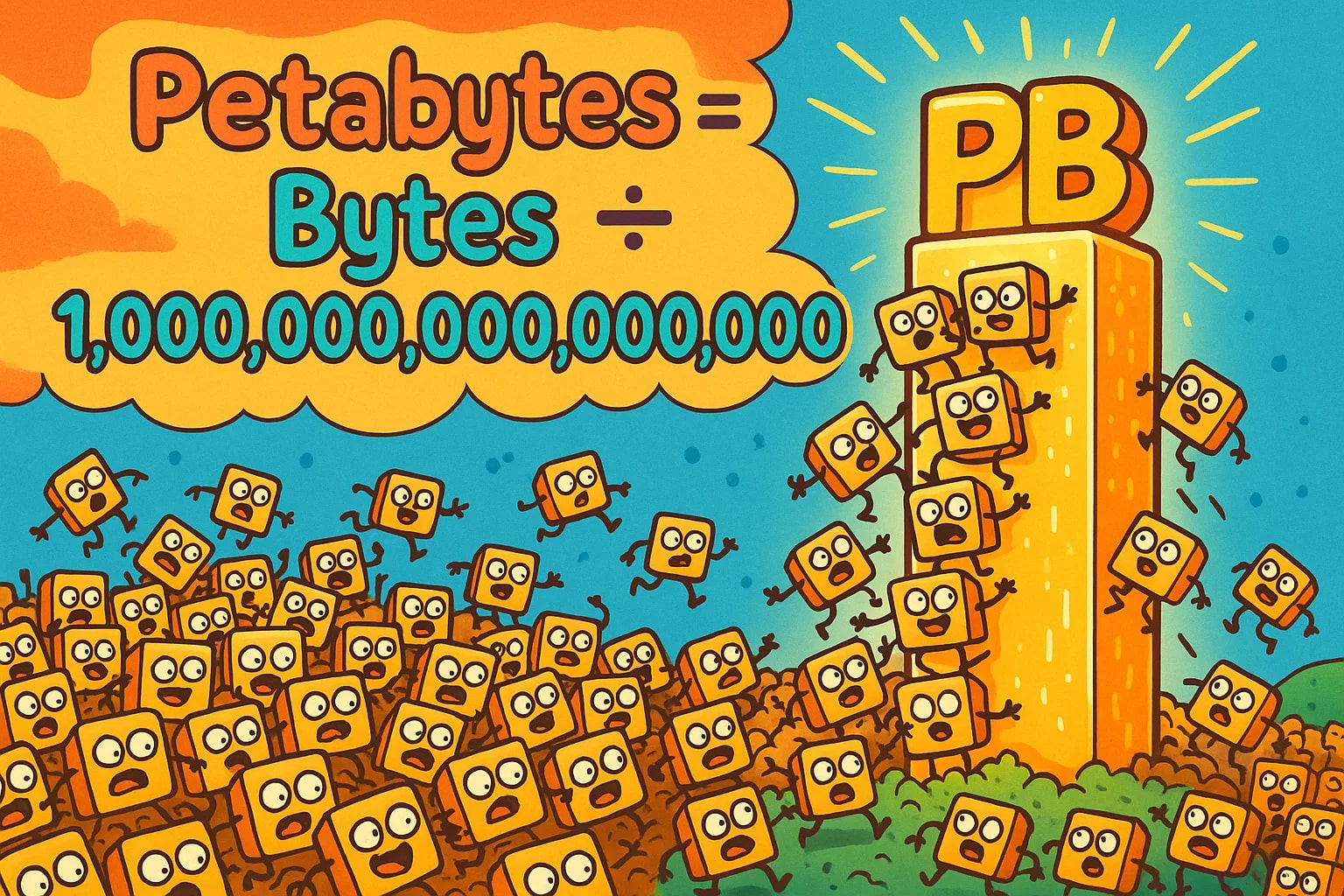byte to petabyte – How to convert B to PB
Dealing with digital storage often starts in kilobytes or megabytes — but as systems scale up, those units quickly fall short. In data centers, cloud servers, and research labs, petabytes are the new normal. If you’re working with large datasets or enterprise storage, knowing how to convert bytes to petabytes helps keep everything in perspective.
Here’s how these two units relate, and how to convert between them in a few seconds.

What is a byte (B)?
A byte is made up of 8 bits, and it’s the basic building block for measuring data. Whether it’s a single text character, a pixel in an image, or a tiny piece of video, it all starts with bytes.
Bytes are used for:
-
File and folder sizes
-
Memory and storage capacity
-
Everything from phone apps to large databases
A typical JPG image might be a few million bytes (megabytes), while a full hard drive can easily hold billions of bytes (gigabytes or terabytes).
What is a petabyte (PB)?
A petabyte is a quadrillion bytes, or:
1 petabyte = 1,000,000,000,000,000 bytes (decimal/SI system)
This is one thousand terabytes, and it’s a scale used for massive systems:
-
Cloud infrastructure
-
National archives and big data storage
-
Streaming platform libraries
-
Scientific computing, like climate models and genomic databases
Some organizations process multiple petabytes of data every day — especially in AI training and global-scale telemetry.
How to convert byte to petabyte
Since:
1 PB = 1,000,000,000,000,000 bytes
The conversion formula is:
petabytes = bytes ÷ 1,000,000,000,000,000
✅ Example: Convert 5,000,000,000,000,000 bytes to PB
petabytes = 5,000,000,000,000,000 ÷ 1,000,000,000,000,000
petabytes = 5
So, 5 quadrillion bytes equals 5 petabytes.
Need to make the switch faster? Try our Data Storage Converter or explore more units with our full Conversion tools collection.
Did you know?
-
A single petabyte can store over 13 years of HD video, non-stop.
-
The Large Hadron Collider at CERN generates roughly 1 PB of data per second during experiments — though only a fraction gets stored.
-
Google’s search index is estimated to span over 100 PB, indexing trillions of web pages.
-
The Human Genome Project produced around 200 TB of raw data — less than one petabyte — but current genome sequencing efforts generate petabytes per month.
-
Modern data centers (like AWS or Azure) manage exabytes of data — and 1 exabyte = 1,000 PB.
From bytes to breakthroughs – How we got to petabyte scale
In the early 2000s, owning a 1 TB hard drive felt enormous. But as video resolution grew, data collection expanded, and online platforms exploded in popularity, storage needs skyrocketed. Suddenly, organizations weren’t counting in gigabytes or terabytes — they were managing petabytes of information daily.
Streaming services like Netflix, for example, store entire libraries of high-resolution content in PB-sized storage arrays. Social media companies archive billions of photos and videos — all measured at the petabyte level.
Meanwhile, in research, institutions like NASA, NOAA, and genomic labs use petabyte storage to model weather systems, store DNA sequences, and train AI systems on image recognition and speech processing.

Scaling up made simple
The conversion is straightforward:
petabytes = bytes ÷ 1,000,000,000,000,000
When working with large-scale infrastructure, system planning, or global data processing, byte-to-petabyte conversions help keep your numbers meaningful and manageable.
Want to run more conversions? Head over to the Data Storage Converter or explore additional units through our complete Conversion tools directory.

